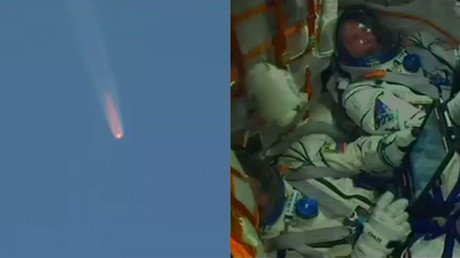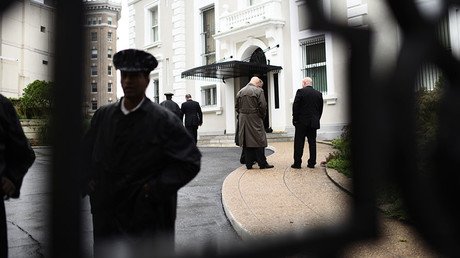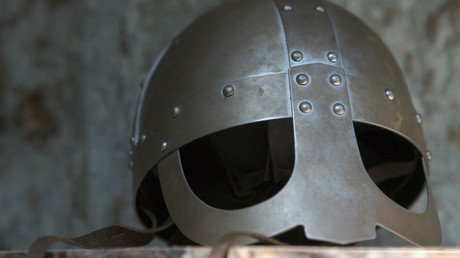Soyuz SOS: History of the Russian spacecraft's incidents & accidents (PHOTOS)
The emergency landing of the ISS crew's spacecraft is not the first time a Soyuz shuttle has experienced difficulties. Two events led to the deaths of four cosmonauts in 1967 and 1971.
Tragedy first struck during the very first launch of a Soyuz spacecraft in 1967, when cosmonaut Vladimir Komarov was killed after the shuttle crashed to the ground during an emergency landing to the east of the Russian city of Orsk. This was caused by parachutes failing to open, which would have slowed down the landing of the capsule.
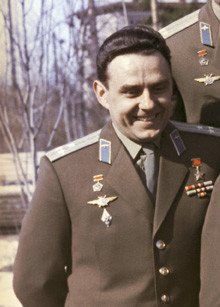
Just four years later, in 1971, crew members aboard the Soyuz 11 witnessed a breathing ventilation valve accidentally open ahead of time during the descent. This resulted in rapid decompression and the subsequent death of all three cosmonauts on board.
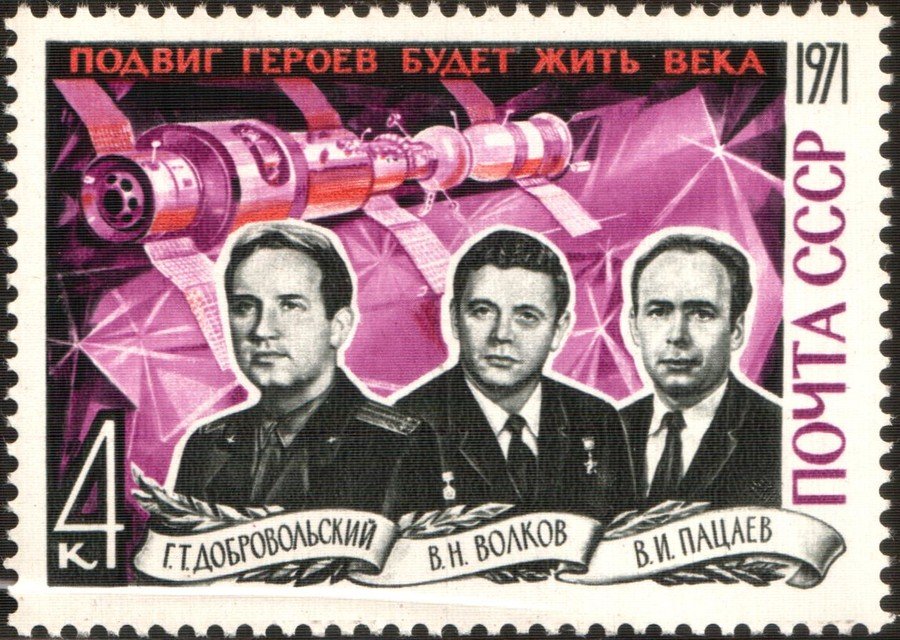
That same year, the Soyuz 10 was sent into space to dock with the first orbital station, Salyut 1. While the crew was expected to spend between 22 and 24 days aboard the Salyut, the cosmonauts on board the Soyuz 10 failed to enter the station and had to return home after the docking system of the spacecraft was found to be damaged.
April 6, 1975 was a lucky day for cosmonauts Vasily Lazarev and Oleg Makarov, who were successfully evacuated one day after the Soyuz craft carrying them failed to reach orbit due to an accident experienced during the start of the third booster stage. It landed on a mountain slope in an uninhabited area in Altai, Russia, near the border with China and Mongolia.
October 15, 1976 saw the automatic docking system of the Soyuz 23 malfunction and the mission aborted. The next day, the spacecraft landed on a partially frozen lake, with the salt water causing an electrical short that deployed the reserve parachute. The parachute became waterlogged and pulled the capsule onto its side, with the hatch ending up underwater. The crew nearly died, but were rescued by helicopter pilots.
In 1977, the Soyuz 25 failed to make a hard dock with the Salyut 6 orbital space station despite five attempts. The mission was aborted due to the fact that there was insufficient fuel to attempt to dock at the other end of the station. The cosmonauts on board returned to Earth.
The April 10, 1979 launch of the Soyuz 33 saw the main engine fail as the spacecraft was approaching the station. This was due to a fault with the gas generator feeding the turbopump. It blew up and damaged the back engine. The spacecraft was able to land successfully and safely.
On April 23, 1983, cosmonauts on the Soyuz T-8 witnessed their spacecraft’s antenna boom fail to deploy properly, leading to an inability to dock. The Soyuz returned to Earth.
READ MORE: First footage of ISS crew after emergency landing (PHOTOS, VIDEO)
In 1994, the Soyuz TM-17 separated from the space station and collided with it. Luckily, there were no major consequences.
Cosmonauts aboard a Soyuz spacecraft in August 1997 experienced the soft landing engines activating early, causing a hard landing. There were no injuries.
On May 27, 2009, the Soyuz TMA-15 experienced a problem with controlling the temperature within the spacecraft after launch. However, the problem was solved through adjusting the internal thermal controls system. The incident did not affect the health of the crew and the spacecraft docked successfully at the space station two days after launch.
On September 11, 2013, the Soyuz TMA-08M experienced a failure of its height sensors, prompting the cosmonauts on board to ‘fly blind’ during their descent. Luckily, with the help of rescue teams radioing the crew, the cosmonauts touched down softly and no injuries were reported.
Like this story? Share it with a friend!
